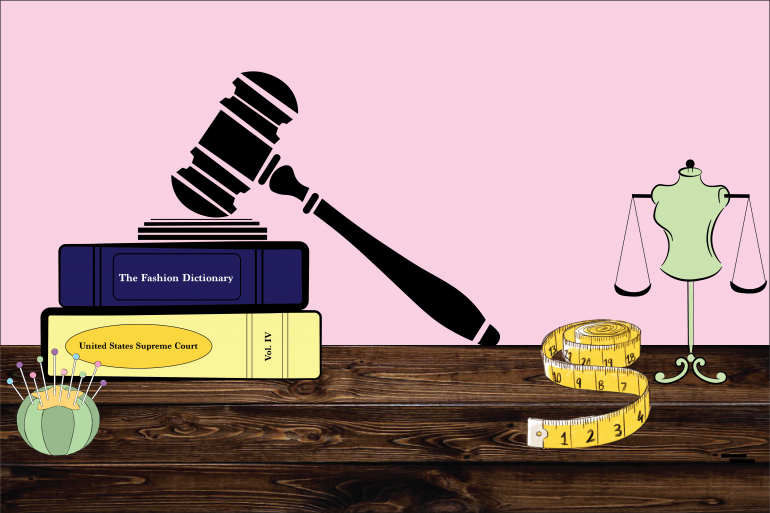Elle Woods makes a great courtroom lawyer. However, her immense fashion knowledge would have been a great asset for her, if she became a fashion lawyer.
Fashion Law, an up and coming branch of law used by fashion houses, helps protect designers and their creative works. Fashion lawyers also use their skills to help create contracts, advise on company acquisition and help litigate copyright and trademark infringement cases. The need for fashion lawyers heightens as our world grows more connected and more involved with consumerism.
The fashion industry’s main use of legal defense is by trademarks. Anything that is a clear statement of where the product came from is trademarked. The Gucci logo on a shirt, the YSL marking on a bag and even Tiffany and Co’s iconic Tiffany Blue is trademarked. Trademarks are useful for protecting logos, but how can designers protect their designs?
The answer is: they can’t. The only way for an artist to get legal protection for their work is through copyright. Copyright protects any artistic or creative tangible work. This includes music, movies, artwork, literature and theater. Fashion designs, under the law, are not artistic work but rather utilitarian items. Clothes keep us warm. Shoes protect our feet. In the eyes of the law, they shouldn’t be protected.
But why is it so important to protect them? Well, in a modern world where we’re all interconnected by the little computers in our hands, we can share information very quickly. A picture of a dress that Kylie Jenner wore to her 21st birthday party can be sent to designers at Fashion Nova in seconds and they can have a copy of that dress within a few hours, ready to sell.
Fast fashion companies can legally copy someone’s ideas and sell them to the masses. This process gives no credit to the original designer, neglecting their craft and their existence altogether. And in the United States, the designer had no protection over their design.
The United States created its copyright law in 1976 and under it gave no protection to fashion designs. This is because at the time there were no great American fashion designers. It didn’t seem likely there would be. Europe was the center of fashion at the time and had a long history with fashion houses. When Europe created its copyright system, it gave significant power to the fashion designers.
Through the 1980s American fashion grew thanks to designers like Ralph Lauren and Calvin Klein. Although American fashion has since grown immensely, now with many great American fashion designers, we still live under outdated copyright law.
As the world becomes even more connected, the demand for fashion lawyers and greater fashion protection swells. Designers, at any scale, should be aware of what protection they have and fight for that better protection of their talent and hardwork.
Words by Tommy Drennan
Graphic by Mary Fant

